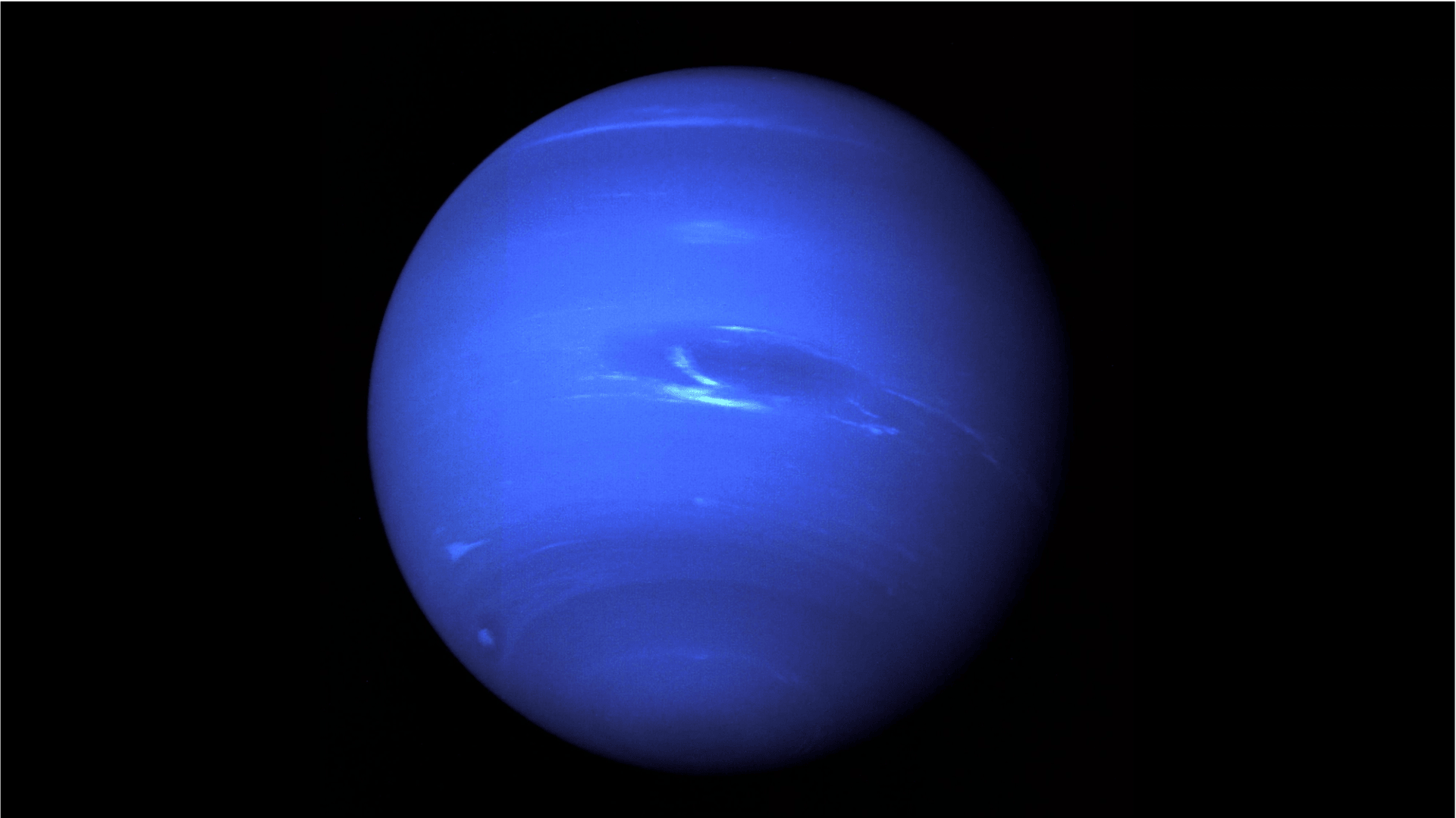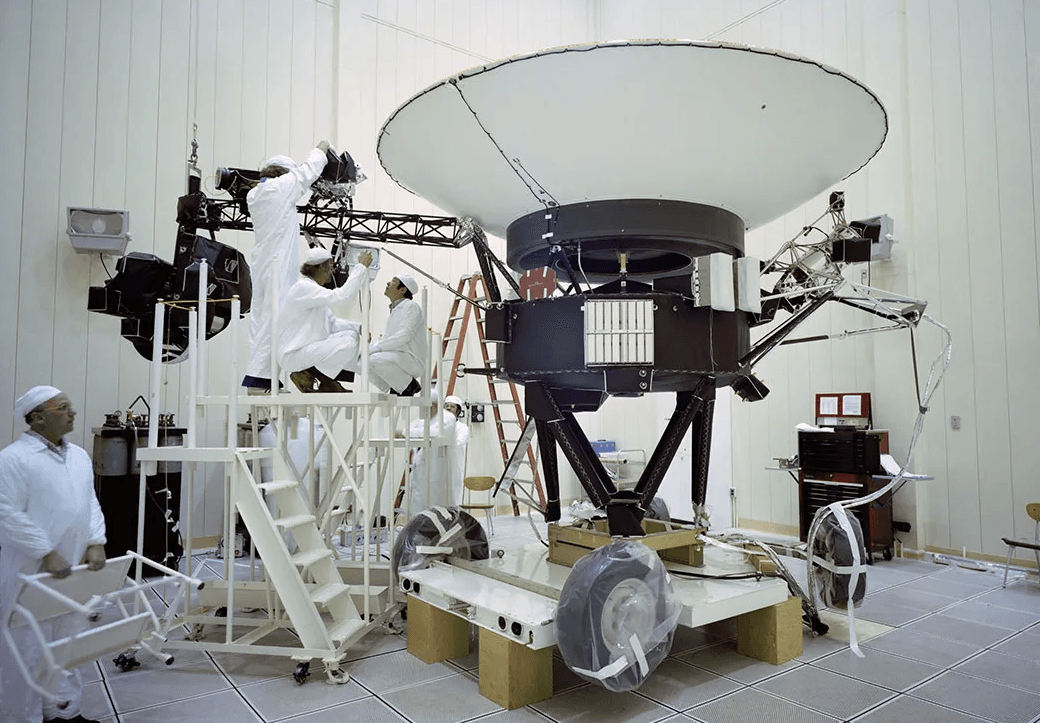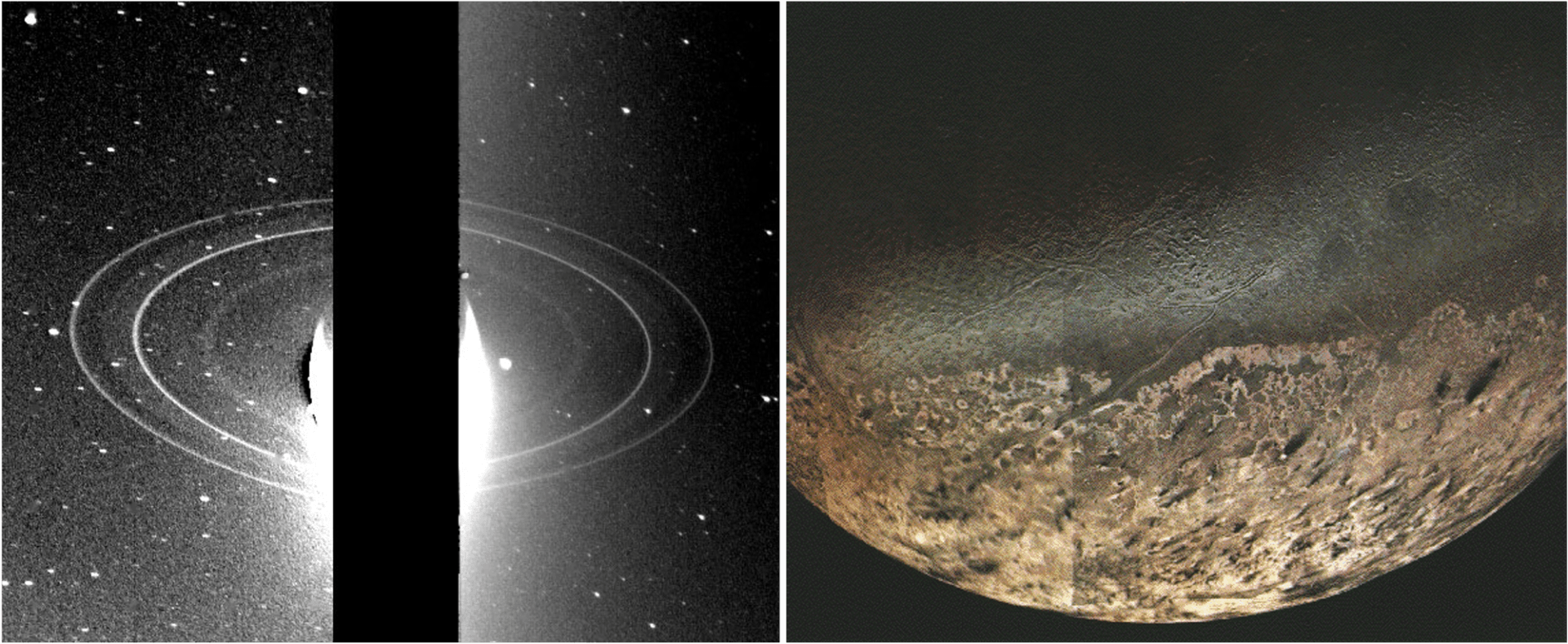Aug. 25, 1989: Humanity Glimpses Neptune Up Close
Voyager 2 became the first spacecraft to probe the Solar System’s mysterious ice giants.

In the 1820s, French astronomer Alexis Bouvard noticed something unusual: The planet Uranus was behaving oddly, its predicted positions out of sync with observation. Could something be tugging on it? French and British scientists rushed to calculate the position of this unknown body, and in 1846, Neptune, the farthest planet from the sun, was finally observed.
But for more than a century afterward, Neptune remained mostly a mystery, a tiny disc in telescope images — until 1989, when Voyager 2 became the first and only spacecraft to complete a flyby of the Blue Giant, introducing humanity to its most distant planetary neighbor and shaping astronomy in the process.
Neptune long presented a challenge for scientists. Some 4.3 billion kilometers away from Earth at its closest point, it was simply too far away to study easily. “By comparison with other planets, progress in understanding physical properties of Neptune and its satellite Triton was extremely slow,” write astronomers Clark Chapman and Dale Cruikshank in the compilation Neptune and Triton.
But in the 1960s, Gary Flandro, a Caltech graduate student working at NASA’s Jet Propulsion Laboratory (JPL), realized that, over the next two decades, a rare planetary arrangement would take place. Jupiter, Saturn, Uranus, and Neptune would be optimally positioned for spacecraft visits, thanks to gravitational assists that could slingshot a probe from one planet to another — and the window only opened every 175 years.
NASA initially proposed sending four spacecraft to the four planets, but the cost was a sticking point, and Congress asked for a more modest plan. The revised project, Voyager, would send two spacecraft to Jupiter and Saturn. But the team, based at JPL in southern California, left the back door open. If Voyager 2’s mission was later extended, the probe could head to Uranus and then Neptune.

NASA launched Voyager 1 and Voyager 2 in 1977. By the end of 1980, both had completed their missions, revealing the two gas giants, Saturn and Jupiter, to the world. On the heels of this success, Congress approved funding to extend Voyager 2’s mission.
JPL scientists quickly reprogrammed the path of the spacecraft. It would take 4.5 years to reach Uranus and another 3.5 years to reach Neptune, but there was much to do. Experts formed working groups, identifying key images and data-collecting measures for the atmospheres, rings, satellites, and magnetospheres of the ice giants.
In 1986, after Voyager 2 completed the first (and only) flyby of Uranus, all eyes turned to Neptune.
Information was scarce. “It was almost embarrassing how little was actually known about the planet and its system,” wrote Voyager 2 scientist Ellis Miner and engineer Randii Wessen in the book Neptune: The Planet, Rings, and Satellites. “The rotation period of Neptune was little more than an estimate, and there was no direct knowledge of the nature of the magnetic and associated radiation fields,” they wrote. “There were only tantalizing indications that Neptune possessed rings, and only the barest of information existed on its two known satellites.”
As planetary scientists debated a flyby path and research aims, others worked on the technical challenges. The Earth-based Deep Space Network of antennas received Voyager 2’s transmissions, but Neptune’s distance was a problem. The receivers would need more listening time to capture the faint signals, which meant reducing the probe’s transmission rate. To compensate, NASA expanded some antennas and recruited more, including in California, New Mexico, Australia, and Japan.
Meanwhile, other JPL scientists remotely reprogrammed and reconfigured Voyager 2’s computer systems. They gave backup computers new roles and adjusted techniques to accommodate low light levels and transmission rates. “The Voyager 2 that passed Neptune was a much better spacecraft than the Voyager that encountered Uranus,” wrote Miner and Wessen.
By June 1989, Voyager was sending near-constant images of Neptune back to Earth. With each passing day, the small, fuzzy dot grew larger in the images, which loaded line by line in the control room. “Voyager, Heading Toward Neptune, Sights 3 Undiscovered Moons,” ran the New York Times on Aug. 4. On Aug. 20, “Voyager Cameras Discover a Turbulent Blue Neptune.” Data on the planet’s atmospheric composition, magnetic field, and ring composition flowed in.
In late August, as the day of Voyager’s closest approach drew nearer, excitement intensified. Daily press conferences kicked off days beforehand. Team members slept and showered at work rather than going home, congregating around monitors as new pictures came in.
On Aug. 24, project scientist Edward Stone told the New York Times, “This is the 24 hours we’ve been waiting for.” At 9 p.m. PT (4 a.m. on Aug. 25 GMT), Voyager 2 passed within 5,000 kilometers of Neptune. The images reached Earth 4 hours and 6 minutes later.

They revealed a dizzying array of discoveries. Over its tour, the probe photographed five new moons and verified another, bringing the number of confirmed moons to eight (the total known today is 13). Other images showed five distinct rings; previously, it was thought that Neptune had only ring fragments. It photographed Neptune’s Great Dark Spot, an Earth-sized storm whose winds reach speeds of 2,000 kilometers per hour. Methane clouds cast visible shadows on the atmosphere below.
During a “Live From JPL” CNN special, the host asked Carl Sagan, who was part of the imaging team, if he had been surprised by anything in the Neptune images. “The experience of the entire 12-year mission of Voyager 1 and 2 is that we never are smart enough to predict what we’re going to see,” he answered.
After completing its flyby of Neptune, Voyager 2 turned toward Triton, Neptune’s largest moon, a frigid place sheathed in nitrogen ice. The probe collected data for a few days before setting out on a new and ongoing adventure: exploring the interstellar medium until it runs out of power.
Voyager’s planetary tour had ended, but the analysis had just started. The data began to merge into a rich, detailed picture of Neptune’s dynamic atmosphere, internal processes, and ring structure. Measurements constrained models of ice giant formation and evolution, with applications for understanding exoplanets. The planet’s tilted magnetic field convinced scientists that Uranus’ similarly oriented field was likely a characteristic of an interior process, not an anomaly. Triton proved to be especially intriguing, with its captivating geologic history and an inclined, retrograde orbit.
The Hubble Space Telescope, the Webb Telescope, and powerful Earth-based telescopes have added to our knowledge, but no spacecraft have visited Uranus or Neptune since Voyager 2.
A year after the Neptune flyby, Sagan reflected on Voyager 2’s discoveries and humanity’s achievements at a NASA press conference. “We humans have completed the preliminary reconnaissance of the solar system,” he said. “There’s only one time in history this happens — when, for the first time, humans send their artifacts and themselves off the earth and explore their local neighborhood in space.”